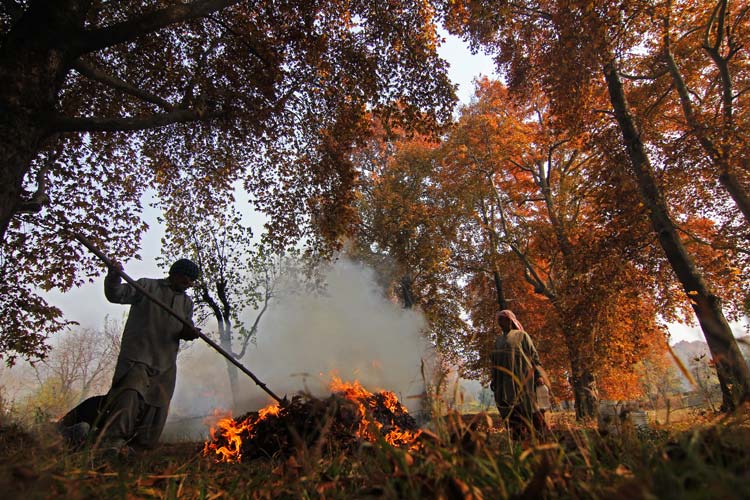The allotment of four new government medical colleges to Jammu and Kashmir has raised hopes for the aspiring doctors, unable to pay hefty donations. However the colleges will add to the already swelling number of unemployed doctors as well. Syed Asma takes a look at both sides of the coin
Of the 58 new government medical colleges allotted across India, Jammu and Kashmir received 4 – one each in Anantnag, Baramulla, Doda and Kathua. Though the complete details are still under wrap, preliminary details suggest that each college is set to accommodate, at least, 100 students.
Every year lakhs of students aspiring to become doctors appear in state’s Common Entrance Test (CET). But due to limited number of seats available in four medical colleges in the state, only 500 students get adjusted.
The existing colleges: two Government Medical Colleges (GMCs), one in Srinagar and other in Jammu has an intake capacity 150 each. While other two, SKIMS Bemina and Acharya Shri Chander College of Medical Sciences and Hospital (ASCCOMS) Jammu, accommodate 100 each.
And each year, as competition for spaces begin, many are left disappointed. But desperation to become doctors often compels students to move out of the valley. Alternative destinations for these students include Bangladesh, Pakistan, China and Bangalore.
Sabiya, daughter of a college lecturer, is one such example. She being an above average student all her life wanted to become a doctor but could not make it to the four colleges in J&K. She missed it by a few points only, her parents say.
Making her dreams come true, her parents, both government employees, decided to send her to Bangladesh, one of the preferred places in Kashmir to train doctors. Sabiya had to pay Rs 20 lakhs for her five year course.
Her parents could manage such a huge amount as both were high-rung officers and Sabiya was their only child. Others either have to drop the plan of becoming doctors, apply for education loans or have to sell off some of their assets.
The rate varies depending on the channel used, ranking and the location of the college chosen. There exist quotas under which students are sent to these places. The costs may vary from Rs 40,000 to Rs 30 lakhs or more.
Bangladesh and Pakistan are preferred and afforded by the middle-class families in Kashmir as colleges in India are very expensive. Colleges in Bangalore or other cities may charge more since they have started integrated courses of MBBS and PGs. Many say in integrated courses, MBBS and PG, it even goes up to Rupees 1 crore.
On the contrary, back home a student has to spend at the most 12,000 Rupees per year (the charges include books as well) which makes it Rs 60,000 for a 5 year course.
“Adding 400 new seats would be of great respite. We can now be doctors at relatively lesser price and would stay closer to home,” says Sabiya.
Apart from bringing respite, the decision is generating hope to improve the scenario of state’s health sector especially in peripheries. Going by the guidelines of Medical Council of India (MCI), which the authorities will have to abide by, says every medical college should have teaching hospital along with, which should include at least 21 departments like anatomy, physiology, dentistry, paediatrics, surgery, etc.
For some time may be district hospitals may serve the purpose for these colleges but in the longer run, state will have to establish full-fledged teaching hospital in their campuses.
This step may lessen the burden of the city hospitals and will definitely help people [patients] in peripheries, says Dr Asmat, “The best thing about these hospitals is that they would be tertiary care hospitals.”
The recommendations of MCI include, “In North Eastern States and Hill States, the beds strength required at the time of inception shall be 200 beds, which shall be increased to 400 beds at the time of recognition for a medical college having annual intake of 50 students and it shall be 250 beds at the time of inception which shall be increased to 500 beds at the time of recognition for a medical college having annual intake of 100 students.”
Dr Asmat adds, “But this is all what we assume! It can be a very good step if taken seriously and with a good planning. It will bring a huge difference in the health sector in Jammu and Kashmir.”
The earlier it is the better!
But the plan of establishment of these colleges has another side too. Besides, boosting the state economy, the colleges will add 400 to the already existing numbers of unemployed doctors, which is huge, says Dr Ali, a faculty member of Sher-i-Kashmir Medical Institute.
“This will increase the work force for gulf and other foreign countries,” he laughs.
He adds, it will create opportunities for lecturers, but the problem is no senior and experience faculty would be available. It will take at least a decade to make them experienced. The senior doctors’ fear that inexperienced staff may make take toll on the quality of education.
It is a normal trend across India that young faculty members are out numbering senior and experienced ones, says Dr Ajaz, a faculty member of GMC Srinagar.
Establishing four medical colleges across state is seen as a huge financial challenge for the government. So far, it is said, that the state will have to bear only 10% of the expenses. And rest will be taken care by the Union health ministry. Indeed, a boosting step to ward off ailing integration!
(Names of the respondents have been changed on request)
















